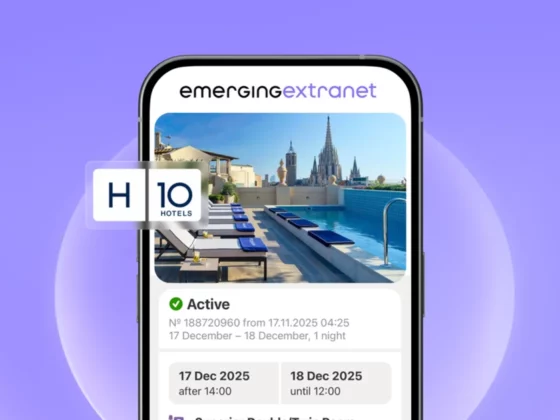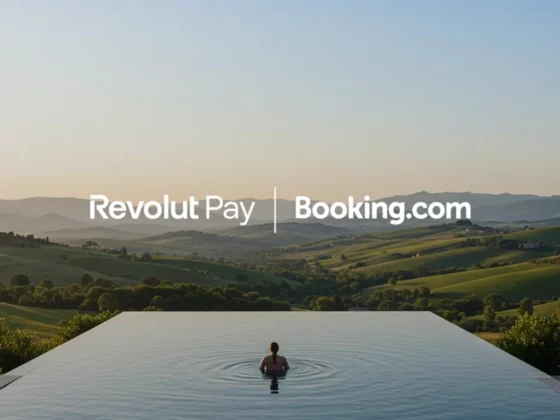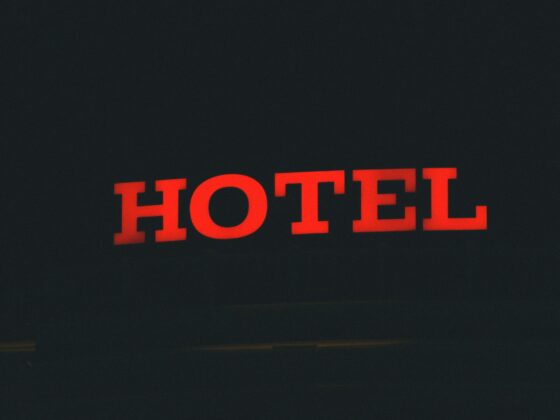Hotels rely on OTAs like Booking.com, Agoda, and Expedia to stay visible and fill rooms. But while these platforms drive bookings, they can also cause unintended revenue loss — not because the platforms are flawed, but because of avoidable mistakes in how hotels manage them.
From hidden discount stacking to overlooked map pins, these common missteps can quietly erode your profit margins, hurt your rankings, and lead to guest dissatisfaction.
Here are 5 overlooked online travel agent (OTA) mistakes — and how to fix them.
1. Stacking Too Many Promotions Without Realizing the Impact
Promotions can boost visibility and drive bookings — but if you’re not careful, you could be giving away 60–80% in discounts without even knowing it.
Here’s what happens:
- You run a mobile rate or country discount.
- The OTA adds a member discount on top.
- Then it applies a seasonal campaign or portfolio deal.
Each OTA stacks discounts differently, and many of these stack automatically.
To make things worse, some discounts aren’t even visible in your extranet. These “hidden discounts” — show up to the guest but not to you, making it hard to track the real final rate.
Why it’s a problem:
You lose control over your pricing, damage rate parity, and hurt your ADR — all while thinking you’re running just one promo.
How to fix it:
- Use your channel manager (like STAAH) to set a consistent BAR (Best Available Rate) across all OTAs as your pricing foundation.
- Ensure the same promotions are applied across all channels. This helps with consistent tracking, eliminates confusion, and gives better visibility of final prices.
- Use tools like the STAAH OCC Formula to quickly detect and rectify rate parity issues across all platforms.
- Manage promotions directly via STAAH rather than individual OTAs, so everything is visible and trackable in one place.
- Check how each OTA applies discounts on top of your BAR rate and be aware of hidden promotions that may not appear in your extranet.
- Always do a test booking from the guest side to see the final public-facing rate. It’s the only way to confirm what guests are actually seeing — and paying.
 5 OTA Mistakes That Could Be Hurting Your Hotel Revenue (and How to Fix Them) 116″>
5 OTA Mistakes That Could Be Hurting Your Hotel Revenue (and How to Fix Them) 116″>
2. Poor OTA Content — Bad Photos, Weak Descriptions, Missing Amenities, and Wrong Map Pin
Guests shop with their eyes. If your OTA listing has poor-quality photos, vague descriptions, or missing details — you’re silently losing bookings and ranking.
Common issues we see:
- Low-quality, outdated, or unprofessional photos
- Limited or incorrect photos (e.g., a twin room should show twin beds)
- Unclear or missing amenity and facility information
- Incorrect map pin (yes, some hotels literally show the wrong location)
- Generic descriptions that don’t sell the experience
Why it’s a problem:
- Weak visuals and incomplete listings lead to lower conversion rates — and OTAs will push you down in search results as a result.
- OTA search filters rely on your amenity data. If you don’t list Wi-Fi, parking, breakfast, or pool correctly — you won’t show up when guests filter for those features.
- Wrong or missing information leads to guest confusion, unmet expectations, and ultimately, negative reviews.
How to fix it:
- Hire a professional photographer. It’s one of the highest-ROI investments a hotel can make. Great photos boost trust and conversion — and you only need to do it once.
- Use detailed, benefit-driven descriptions. Instead of “Room with A/C,” say “Bright, airy room with private balcony, blackout curtains, and fast Wi-Fi.”
- Leverage tools in STAAH’s advanced channel manager to manage photos, content, and amenities across major OTAs like Booking.com, Expedia, and Agoda.
- Audit your OTA listings regularly to ensure all content — amenities, facilities, descriptions, policies — is complete and accurate.
- Double-check your map pin location on every OTA — especially if your property is hard to find.
 5 OTA Mistakes That Could Be Hurting Your Hotel Revenue (and How to Fix Them) 117″>
5 OTA Mistakes That Could Be Hurting Your Hotel Revenue (and How to Fix Them) 117″>
3. Slow Response to Guest Messages and Reviews
OTAs track how fast you respond to booking inquiries, guest messages, and reviews. Long delays hurt not just the guest experience, but also your OTA ranking and visibility.
Why it’s a problem:
- Slow response times signal poor service and can push your listing lower in OTA search results.
- Ignoring or delaying review responses gives the impression of neglect and reduces trust from future guests.
- Even a great stay can result in a negative review if post-stay communication is lacking.
How to fix it:
- Set internal response time targets (ideally under 24 hours) for both messages and reviews.
- Use STAAH’s ReviewMinder to track, manage, and respond to reviews across multiple platforms, all in one place. This makes it easier to stay on top of your online reputation without switching between multiple tabs.
- Personalise your review responses using STAAH’s AI tool, instead of relying on generic templates. STAAH’s ReviewMinder AI is free of charge for all subscribers to the service.
- Use pre-written templates or AI for faster response and maintain a friendly, consistent brand tone.
Fast, thoughtful responses show that you care — and that builds guest confidence and long-term reputation.
 5 OTA Mistakes That Could Be Hurting Your Hotel Revenue (and How to Fix Them) 118″>
5 OTA Mistakes That Could Be Hurting Your Hotel Revenue (and How to Fix Them) 118″>
4. Leaking B2B Rates into B2C Channels
One of the most costly but overlooked mistakes is uploading corporate or wholesale (B2B) rates into public OTA channels. The result? Deeply discounted rates show up on metasearch or OTA listings — often undercutting your own price.
Why it’s a problem:
It damages rate parity, cannibalizes B2C and direct bookings, and confuses potential guests who see different prices on different platforms.
How to fix it:
- Always segregate B2B rates from public-facing rate plans.
- Only offer these discounted rates through proper B2B platforms, such as vetted bedbanks, wholesalers, or B2B OTAs like Hotelbeds or WebBeds.
- Consider using dynamic static rates, which prevent ADR and RevPAR from being cannibalized.
- Avoid uploading B2B rates into channels that also distribute to retail OTAs unless you have full control over where those rates appear.
- Use STAAH to assign and control rate visibility by channel, keeping your pricing structure clean and intentional.
This allows you to continue offering strategic B2B partnerships — without risking price leakage into consumer-facing platforms.
 5 OTA Mistakes That Could Be Hurting Your Hotel Revenue (and How to Fix Them) 119″>
5 OTA Mistakes That Could Be Hurting Your Hotel Revenue (and How to Fix Them) 119″>
5. Increase Commission Without a Clear Strategy
Visibility tools like Booking.com’s Visibility Booster or Agoda’s Growth Express can increase exposure — but only if used correctly. Turning them on without a strategy often leads to high costs, low ROI, and in some cases, paying more for demand you already had.
Why it’s a problem:
Increasing commission without fixing fundamental issues like poor content, slow responses, or rate inconsistencies magnifies the problem instead of solving it.
How to fix it:
Before you activate any visibility tools or agree to a higher commission rate, make sure your foundations are solid:
- Pricing strategy is clean (understanding discount stacking, rate parity in place)
- Content is complete and consistent across OTAs
- Distribution is accurate (right room types, inventory synced, map pin verified)
- Message response and review handling are prompt and professional
Only after these basics are fixed should you consider increasing commission — and even then, it should be aligned to a specific goal (e.g., off-peak periods, new property launch).
 5 OTA Mistakes That Could Be Hurting Your Hotel Revenue (and How to Fix Them) 120″>
5 OTA Mistakes That Could Be Hurting Your Hotel Revenue (and How to Fix Them) 120″>
Final Thoughts: Use the Right Tools to Avoid These Costly Mistakes
Managing OTA distribution isn’t just about being listed — it’s about being strategic. These five mistakes can quietly eat away at your revenue, even when occupancy looks strong.
The good news? With a smart strategy and a robust channel manager like STAAH, you can take back control:
- Control all your online rates in one place
- Manage content across OTAs consistently
- Respond to guest reviews faster
- Prevent price leakage
- Use visibility tools wisely — with data to back you
The result? Higher visibility, better conversion, and stronger revenue — without the need to grow your team.
Author: Chieh-Chi (Jacky) Huang
 5 OTA Mistakes That Could Be Hurting Your Hotel Revenue (and How to Fix Them) 121″>Jacky Huang is the founder of GetGuest, an online revenue management service helping small and medium-sized hotels grow through dynamic pricing and OTA optimization. As a hotel owner in Thailand, Jacky developed his own framework through hands-on experimentation. Today, he partners with independent hotels across the country to deliver measurable results and drive long-term growth.
5 OTA Mistakes That Could Be Hurting Your Hotel Revenue (and How to Fix Them) 121″>Jacky Huang is the founder of GetGuest, an online revenue management service helping small and medium-sized hotels grow through dynamic pricing and OTA optimization. As a hotel owner in Thailand, Jacky developed his own framework through hands-on experimentation. Today, he partners with independent hotels across the country to deliver measurable results and drive long-term growth.
 5 OTA Mistakes That Could Be Hurting Your Hotel Revenue (and How to Fix Them) 122″>
5 OTA Mistakes That Could Be Hurting Your Hotel Revenue (and How to Fix Them) 122″>









